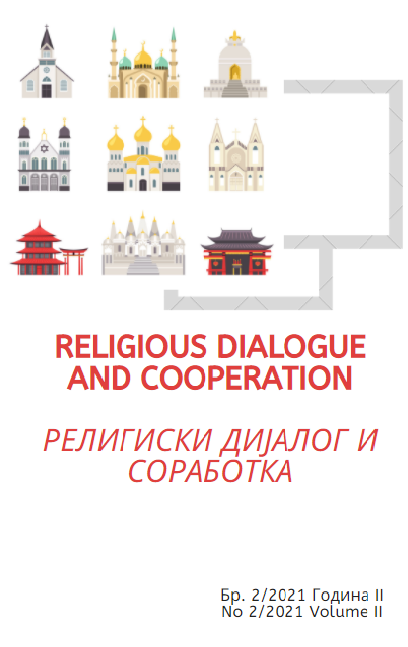GENERAL PREVALENCE AND FORMS OF MANIFESTING THE RELIGIOSITY AMONG THE POPULATION IN THE OHRID-STRUGA REGION
DOI:
https://doi.org/10.47054/10.47054/RDC212011bKeywords:
religion, religiosity, religious organizations, value orientations, religious toleranceAbstract
Today, as a result of the failure of socialism, we are
facing a period of numerous big changes in society, which are of
economic, political and social nature. In addition, these changes
are accompanied by changes in the value priorities of the social
value system. More precisely, people are exposed to influences
of social, political and cultural events, so it is difficult for them to
adapt. In such a situation, religion offers a philosophy of life that is
compatible to specific confession. Ethnicity and religion are basic
cohesive factors in multicultural and multiconfessional areas like
ours. There are tendencies of individuals and groups to equate
nationality with religion. Religion as one of the key factors of
human consciousness influences not only the building of spiritual
system and the social value system, but also the way of life. Losing
self-confidence in solving the important tasks in life, man tries to
find help, and it is precisely religion that is the right direction to
look for it. It is very important to emphasize the activities of the
confessional communities which insist on attracting attention with
their organizational structures and filling the gaps that other social
institution and organization left empty. The social changes occurring
in the late 1980s and early 1990s brought about by the failure of
socialism are changing the social role of religion. We live in a world
characterized by processes of desecularization or sacralization. The
percentage of those who have declared themselves non-religious
in the past is almost equal to those who have declared themselves
religious in the period after the 1990s. This reversal or change of
attitude towards religion, which is characterized by increased
religiosity among the entire population, is an inspirational ground
for the study of religion. In this research, the subject of investigation
was the religiosity of the population in the Ohrid-Struga region,
a region that represents ethnic and religion heterogeneous
environment. The two most important religious organizations are the Macedonian Orthodox Church - the Ohrid Archbishopric and
the Islamic Religious Community. The target group is consisted of
people older than 18. The results obtained by the research show
the influence of religiosity, which is at a very high level, on the value
orientations of the population in the Ohrid-Struga region.





